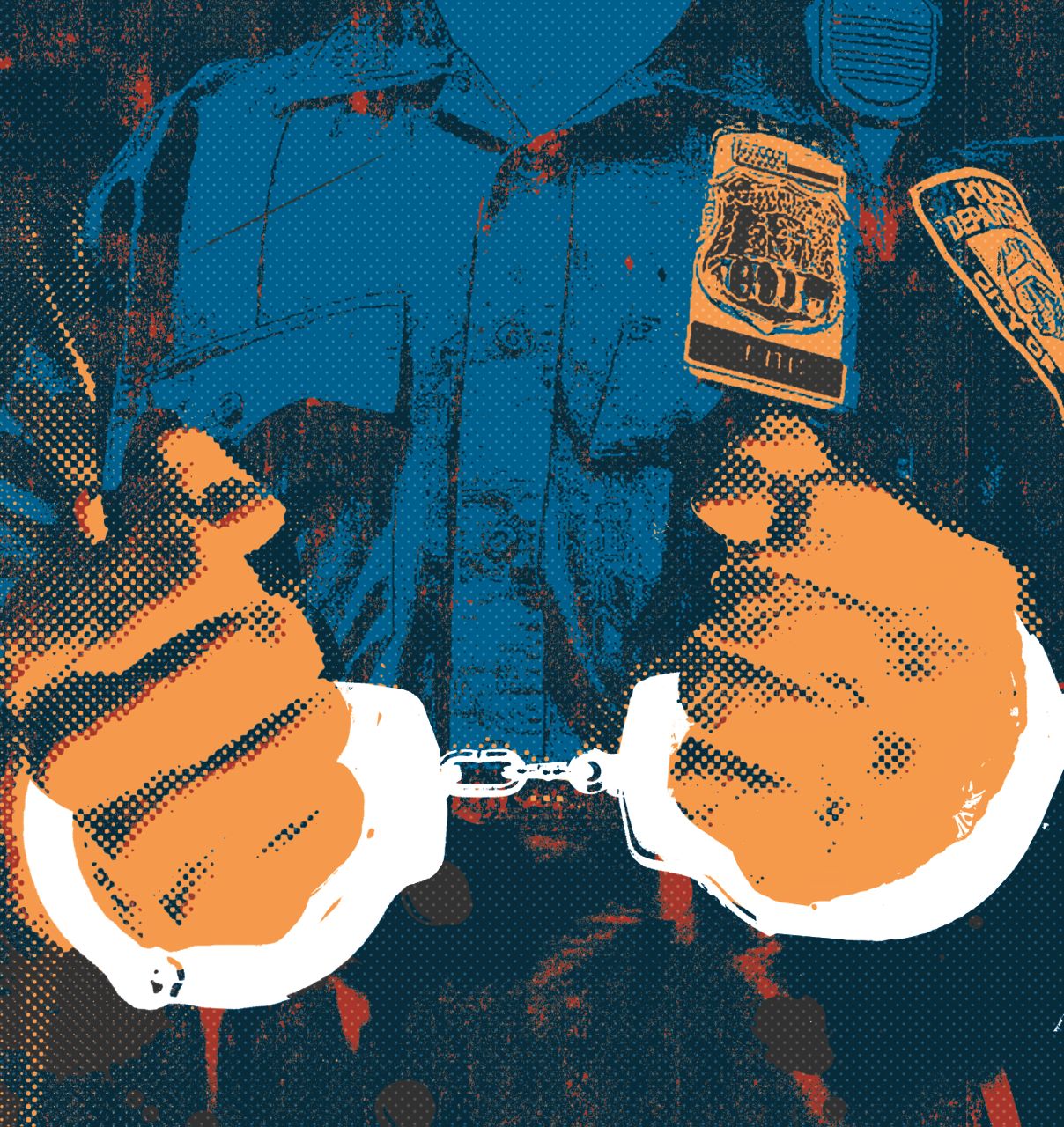
Almost everywhere I went as a beat cop in South Harlem, I felt welcome.
I joined the NYPD right after the September 11th attacks, which had changed how many people viewed police. Thanks to 60 officers who sacrificed their lives in a desperate bid to save people from the burning World Trade Center, New Yorkers started seeing their cops as protectors rather than “pigs.” Flower-strewn tributes to fallen cops sprouted up on sidewalks. NYPD baseball caps became popular, if unlikely, fashion accessories. People who might normally consider me an oppressor for roaming the hallways of their buildings in uniform thanked me for making their homes safer. At the same time, violent crime in New York was in decline, reinforcing the perception of cops as heroic public servants.
Now, almost 14 years later, some cops feel as if public opinion has turned against them.
After two white officers accused of killing black men, Michael Brown and Eric Garner" class="company-link">Eric Garner, in separate incidents in Ferguson, Mo., and Staten Island were exonerated in criminal court, protests clogged New York’s streets and closed bridges last December. Some protestors held signs calling for the death of cops; others equated New York’s Finest to the Ku Klux Klan. Days later, two NYPD officers sitting in their patrol car in Brooklyn, Rafael Ramos and Wenjian Liu, were ambushed and executed by a gunman who had boasted on social media of seeking revenge against the police. Yet more anti-police protests followed.
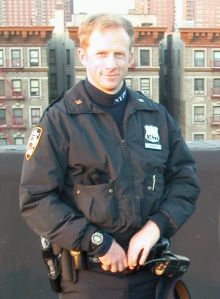
I wonder how I would have dealt with this toxic environment if I were still in uniform. I left the job in 2005 because it was sending me to an early grave. In the summer of 2003, I caught a cold but didn’t take sick leave because I ’d been told that advancing my police career required a spotless attendance record. After a few days of working while sick, I was hospitalized for pneumonia. Before the severe illness, I bicycled to work whenever possible and hiked on weekends. After the pneumonia, I spent nearly all of my free time sleeping off the stress of the job, including long hours, last-minute shift changes and the rigors of dealing with people at their worst moments.
If I couldn’t handle being a cop in the good old days, how could I cope with it now?
“You’d hate it,” said Officer Broderick, who is still on patrol. “It’s a whole new world. People are refusing to obey lawful orders because they don’t think we have the authority to stop them anymore. They tell us, ‘I don’t have to roll down my window because the mayor said so.’ ”
Like the other police officers interviewed for this article—an admittedly informal survey and small sample—Officer Broderick agreed to speak to the Observer on the condition that we not reveal his real name; the NYPD prohibits officers from speaking to the media. And like every other cop I spoke with, he said he was flabbergasted when Mayor Bill de Blasio seemed to insinuate that his police force was rife with racists. After a Staten Island grand jury decided not to indict the white officer who allegedly killed Eric Garner with an illegal chokehold, the mayor said at a press conference that he feared for the safety of his biracial son and warned Dante to “take special care” when dealing with the police.
“When the mayor essentially told the entire world that we are all racists, it made our jobs much, much harder,” Officer Broderick, who works in a historically crime-ridden precinct, said. Despite his choice of profession, “I’m basically a shy person,” he noted. “It’s a big deal for me to come up to a bunch of people playing loud music on the street and tell them to be quiet, but I do it because it’s my job … It used to be when we told people to turn down their boom boxes, they’d do it because they didn’t want a summons. But one night after the mayor’s comments, one of my co-workers asked some kids to be quiet, and they told him to fuck himself and they turned their music up louder.”
Officer Casados grew up in a neighborhood beset with drug-related violence. As a child he saw a man publicly pummelling another man with a baseball bat in broad daylight. He came to admire the NYPD after they stopped the attack and ran after the attacker “as if their own lives depended on it.” Officer Casados said being a cop, while never easy, has become especially challenging of late.
Not long ago, he was surveilling a man who was selling drugs on a street corner. When he approached the dealer to arrest him, the man dropped his stash and challenged Officer Casados to a fight. The man had been caught red-handed, said Officer Casados, “but instead of giving up, he said, ‘Nuh-uh, pig. You’re going to have to earn this.’ Then he pounced on me.” In the resulting scuffle, Officer Casados, who said he had been caught off-guard by the man’s gall, suffered serious injuries.
I asked Officer Casados whether the rising tide of anti-police sentiment had motivated the suspect to attack him. After all, street dealers are not known as a rational bunch. “I don’t know for sure,” he acknowledged. “But I see this kind of attitude all the time now. People cuss me out like never before, and criminals are getting bolder and bolder. They think the mayor is on their side.”
***
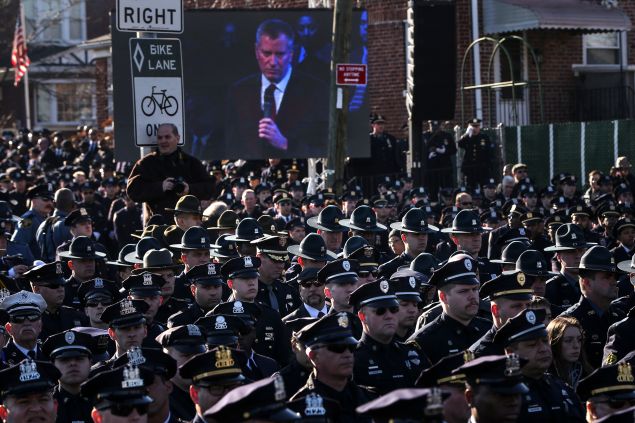
A spokesperson for Mayor de Blasio issued a brief response email: “Crime continues to remain at record low levels in NYC, even as we’ve reduced the overuse of stop and frisk. The numbers don’t lie, New York City continues to be one of the safest big cities in the world.”
I felt sorry for Mayor de Blasio when every cop I interviewed cast him as the enemy. After all, unlike his predecessor, he hired 1300 new officers, spending a cool $100 million a year to do so. But when I asked the officers, “Has the mayor done anything to support police?” The answer was uniformly, “No.”
I was inclined to give the mayor the benefit of the doubt because he had campaigned for office on a promise of reforming the NYPD’s stop-question-frisk practices. I had detested the policy ever since I worked in a detail whose unofficial goal was to stop as many people as possible. For everyone we stopped, we filled out a UF-250 form and sent it to borough headquarters at the end of the night. UF-250s were originally created as a way of collecting data on street encounters, but they became, like summonses, just another form of currency in the department’s vast underground economy. It seemed we could never write enough UF-250s to satisfy our bosses because the quotas kept getting higher and higher.
According to the police department, cops stopped 97,296 people in 2002, my first year on the job. In 2005, my last year on the job, the number had reached 398,191. Stop-question-frisk quotas were declared illegal in New York State in 2010, but that didn’t stop precinct commanders from demanding their cops continue to produce numbers. The year after the court ruling, the number of stop-question-frisk encounters skyrocketed to 685,724, a more than seven-fold increase in eight years.
So when Bill de Blasio promised to end the madness, I was intrigued. When it seemed that he had ended the madness—only 46,235 stops were made in 2014—I was impressed. But when I learned about the resulting changes, I started to think there had been a method to the madness. All the cops interviewed blamed the curtailing of stop-question-frisk on a recent spike in violent crime in the city. This spring and summer, the news has been dominated by headlines about increases in the most troubling offenses after many successive years of declines. In the week of August 10 to August 16, the NYPD reported double-digit increases over the same period last year in the categories of murder, rape, robbery and misdemeanor sex crimes. Year-to-date, murder is up 9.5 percent, rape 7.1 percent; other categories of crimes are practically unchanged or down.
Mayor de Blasio recently urged reporters to look past the violent crime headlines and focus on the fact that overall crime is down. “Overall crime across the city is down more than 4 percent compared to last year—itself a record-setting year for crime lows—and shootings are also down compared to last year,” he wrote the other day in a Daily News Op-Ed. According to Officer Casados, the mayor is playing a shell game with statistics. “Overall crime numbers may be down, but those numbers are not reliable,” he said. “Overall crime includes things like larcenies, which cops are pressured to under-report. It’s common practice for a cop to start a report for a larceny that eventually gets downgraded to lost property. Crimes like murders, shootings and rapes are too hard to downgrade, so those numbers actually reflect reality.”
[In a phone interview with the Observer, Stephen Davis, Deputy Commissioner, Public Information at the NYPD, noted that, “We had 778 shootings year to date, as opposed to 790 shootings in 2014; they’re down, but not dramatically down or dramatically up. Certain crimes, specifically street crimes, historically rise in the summer months.” He added that, “We’ve yet to find any established correlation in the stop-question-and-frisk and violence. In fact, over the past ten years, those years where we had the most stop-question-and-frisks, the most, we’ve also had the most shootings and homicides.” Mr. Davis also questioned the notion that the NYPD battles a morale problem: “I don’t see a major morale problem here. I think we had more of a morale problem, certainly during the demonstration times, when police were being subjected to a lot of stress and a lot of national attention. Certainly, morale was affected by the deaths of Ramos and Liu—no question about that.”]
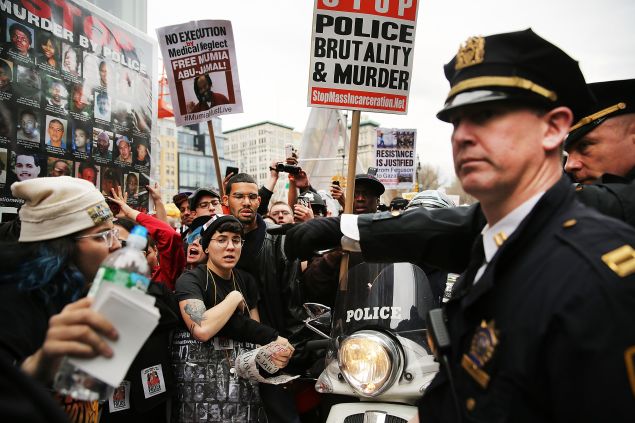
Officer Lorenzo disagrees. He grew up during an era when packs of men roamed many streets hunting for weak-looking victims, a blood sport known as “wilding.” He routinely felt scared to leave his family’s apartment—until he decided to empower himself by becoming a police officer. He sees the uptick in violent crime as a product of the loss of stop-question-frisk. “Criminals see we’re not stopping people on the street anymore, so they’ve adjusted their way of doing business. Where they might have thought twice about walking down the street with a 9 mm, now they’re packing one. … When cops aren’t allowed to be cops, there are more weapons on the street, and we get more violent crime.”
Officer Russell, who lived in a tranquil community before moving to New York City, said that placing additional constraints on stop-question-frisk can prove dangerous. “We need the power to stop people on reasonable suspicion,” he said. “If you weigh us down with procedures and politeness, we lose our tactical advantage. Say I stop a guy who has a gun-shaped bulge in his jacket pocket, and I advise him, as the mayor wants me to do, that I am officer so-and-so of the such-and-such precinct and I am now going to frisk him based on reasonable suspicion of a crime due to the gun-shaped bulge in his pocket. That may only take me a few seconds, but in tactical terms, I’ve just given that guy a world of time to weigh his options, which are either to shoot me or to go to jail. Before I’ve finished my little introduction, he’s already reached for his weapon and used it against me. If, instead, I just approach that guy and reach for the bulge, I might be able to get my hand on his weapon before he does.”
Mr. Davis argues that the NYPD trains officers on the tactical and legal aspects of stop-question-frisk and that not all scenarios mandate warnings. “If you had a robbery suspect and you see a guy who matches the description of a guy who pulled a robbery with a gun and he’s got a bulge on the side, you don’t have to go up and have a discussion with him.”
***
Could body-worn cameras help or harm cops do their demanding job? None of the officers interviewed have patrolled with the cameras because the NYPD only recently launched a pilot program to test the technology, which recently was expanded to arm 1000 officers with the equipment. But some cops have already formed strong opinions about the controversial cameras.
“Wearing body cameras is the only way cops can deal with the smartphone era,” Officer Lorenzo said. “The videos people put on the Internet always seem to start after a situation has escalated. You see the cop taking action, but you don’t see why. With body cameras, at least the cop has a chance of showing a jury what he was reacting to.”
Officer Broderick said he believes body cameras will be good for cops overall but could complicate responding to domestic violence. “It’s hard enough getting information from a victim when my only recording devices are my eyes and ears. How are they going to react when they know they’re being videotaped?”
Officer Russell suggests that cops shouldn’t be the only public servants forced to wear body cameras. “If government transparency is so important, then everyone who works in City Hall should have to wear one, from the interns to the mayor. Let’s all be accountable.”
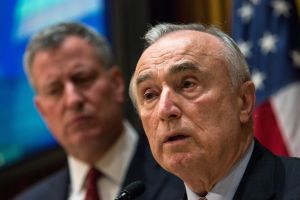
One of the changes recommended by the NYPD’s court-appointed federal monitor is to require officers to give a receipt to people they stop if the stop does not result in an arrest. The receipt would provide the officer’s shield number and information about how to file a complaint against the officer. The city has started a pilot program to give receipts to people who are stopped but released. “This is a product of a judge’s directive and a federal monitor’s oversight,” Mr. Davis said. “And if the officer does things correctly, he’s going to be defended.”
If implemented throughout the force, Officer Casados worries that the policy will make cops’ lives more miserable. “When I stop people because they fit the physical description of a criminal suspect, sometimes they accuse me of racial profiling. And if I have to pat them down because the criminal I’m looking for is armed and dangerous, they’re even more upset. So after offending someone like this, the last thing I want to do is give them a receipt with my shield number and a phone number to call to complain about me. There’s no question they’re going to call that number, either to vent their anger or to cash in on their suffering with a lawsuit.”
Officer Broderick said the increased fear of civil rights lawsuits has already changed how cops canvass for suspects. “It used to be if we saw someone who mostly fit the description of a suspect, we’d stop the guy because the description may not be a 100 percent accurate. The suspect may actually have been wearing blue jeans, but the guy he robbed told the cops the suspect was wearing black jeans. In the dark, blue jeans may look black, so we’d take that into account. Now, if we see someone who doesn’t fit the description exactly, we’ll drive right on by. There’s too much risk for us if we get it wrong.”
Officer Holt is an African-American from New York City who spent part of his career policing a high-crime area of Manhattan. He cited the $5.9 million settlement the City of New York offered the family of Eric Garner, the African-American man who died after a white police officer brought him to the ground with an alleged illegal chokehold. The public perception was that another racist, white cop had killed another innocent, unarmed black man, but, Officer Holt noted, “Cops didn’t see it that way. They saw a very large, unhealthy man who committed a crime and resisted arrest, and a cop who was much smaller than him who did what was required to get the man in handcuffs.”
Officer Casados said that when the city paid out a huge cash award to Garner’s family before a civil trial had even commenced, “It told cops that even if you do the right thing, you are still wrong, and we will not back you up.”
***
Who has their back? According to Officer Broderick, most cops think Commissioner Bill Bratton is on their side even though he works for Mayor de Blasio and backs his policies. “We know he’s in a bad position. He likes going after the small crimes because they lead to the bigger crimes, which is what we’ve learned in the past … Personally I don’t understand why [Mr. Bratton’s] staying in his job. I guess he’s doing what he can to help us out.”
As for the public, it’s not entirely clear whether they have the cops’ backs now or will in the future. Officer Casados fretted, “It really hurts my feelings that people hate me just because I’m a cop. Those people don’t know that I once put my own life on the line to save a complete stranger from being shot and I would do the same thing for them.”
Officer Broderick said that if there was one thing he could tell the people of New York, it would be, “Don’t think we’re all the same, or that we’re all racist, or that even most of us are racist. We come from every possible background. We’re men and women and black and white and every other color. In our ranks are soldiers, comic book nerds, musicians, accountants. We’re just normal people.”
At a memorial service in January for the two Brooklyn cops killed by a police-hating gunman, many cops did an about-face while the mayor was speaking to them. Officer Lorenzo said the people of New York shouldn’t take this the wrong way. “We may have turned our backs on the mayor, but we’ll never turn our backs on someone who needs help.”
Paul Bacon is the author of Bad Cop: New York’s Least Likely Police Officer Tells All (Bloomsbury USA). He is currently writing an adventure novel.

